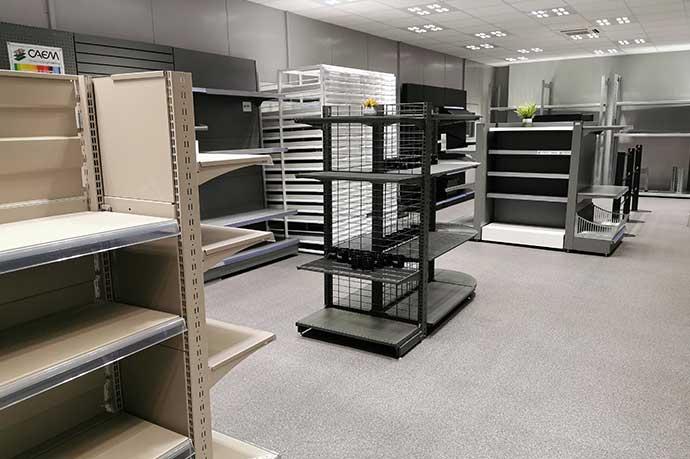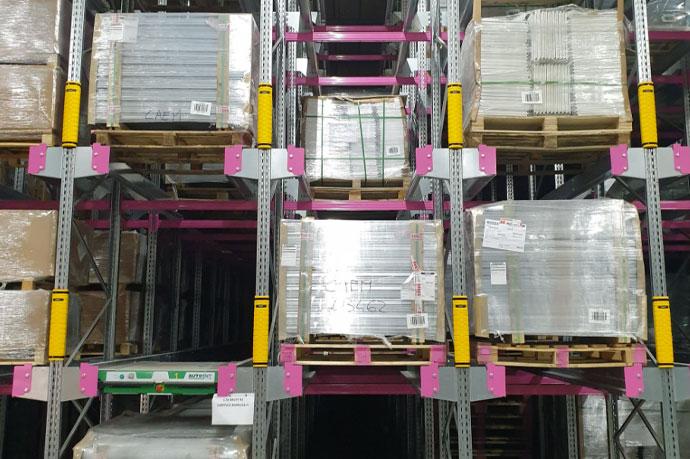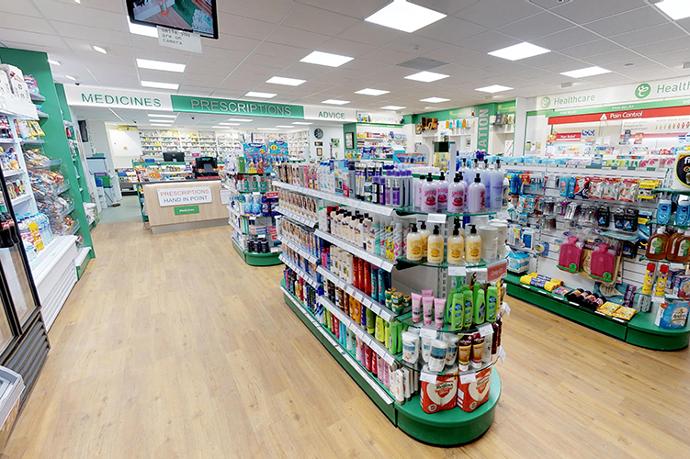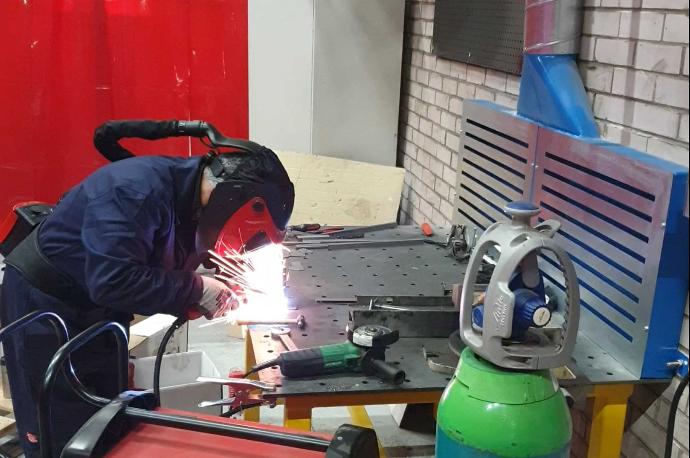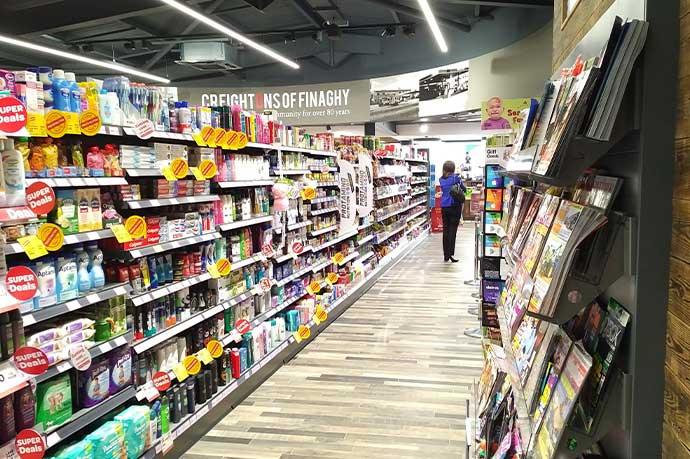Pet Shop Retail Display Tips – Maximise Sales Today
Pet retail environments have transformed dramatically since 2022, with changing consumer expectations and technological integration reshaping how customers interact with products. The difference between a thriving pet shop and one that struggles often comes down to how products are presented, navigated, and experienced. A well-executed pet shop retail display not only captures attention but also guides customers through a memorable shopping journey, directly impacting sales and loyalty.
Introduction: The Importance of Effective Pet Shop Retail Displays
Understanding the Role of Retail Displays in Pet Shops
Retail displays do far more than simply hold stock—they communicate your brand, influence purchase decisions, and set the tone for the customer experience. When shoppers walk into a pet store, their first impressions are shaped by how inviting and organised the space feels. The global retail displays market reached $16.5 billion in 2023, with projected growth of over 6% annually through 2032, fueled by advanced technologies like digital screens and augmented reality designed to increase consumer engagement.
High-quality, attention-grabbing retail displays have become central to how brick-and-mortar stores compete with online retailers, boosting foot traffic and encouraging impulse purchases. This is particularly relevant given that e-commerce accounted for 14.3% of total retail sales in 2023, making in-store experiences more crucial than ever.
Aligning Display Strategies with Business Goals
Every display decision should serve a clear objective, whether it's boosting sales of a new product line, highlighting your brand's unique qualities, or streamlining the shopping journey. 80% of consumers are more likely to buy from brands that offer personalized experiences, indicating that tailored messaging and interactive retail displays can significantly influence purchasing behavior and foster greater loyalty among pet store customers.
Consistency between your display strategy and wider business goals builds trust and reinforces recognition. Regular reviews of display performance, using both sales data and customer feedback, ensure your approach evolves alongside changing trends and customer expectations.
Types of Pet Shop Retail Displays
Wall Units and Fixture Shelving for Maximum Exposure
Wall units are a mainstay in retail pet shops, making the most of vertical space to showcase a broad product range. Modern adjustable shelving systems offer flexibility for different product types and visual styles, with modular accessories such as slat back panels and wire shelves that adapt as your inventory grows. Professional retail design experts emphasize that overhead signage for pet sections and clear categorization make navigation effortless and can significantly boost sales.
Durable construction ensures even heavy items, like bulk pet food, are supported safely, while a clean, organised appearance improves navigation and customer confidence. The versatility of these systems allows for easy reconfiguration during promotions or seasonal changes.
Gondola Shelving for Versatile Merchandising
Gondola shelving stands at the heart of most successful pet shop layouts, offering double- or four-sided merchandising potential. These fixtures can become focal points for featured brands or impulse items, with finishes and colours that reinforce your store identity. Using multiple types of display fixtures prevents monotony and spotlights specific items effectively, according to retail merchandising experts.
Their modularity allows you to respond quickly to evolving retail pet trends and shopper demands, particularly important as Gen Z pet owners seek products for diverse pet types beyond cats and dogs, including birds and reptiles.
Custom and Bespoke Shelving Solutions
No two pet shops are identical, which is why bespoke shelving solutions are invaluable. Custom design services can deliver tailored units that fit unique floor plans and branding requirements, integrating features like branded lighting, interactive zones, or storage for hazardous items. These personalised displays not only enhance the store's atmosphere but also make the shopping experience distinct and memorable, ensuring alignment with your retail pet ethos.
Optimising Product Arrangement
Strategic Product Placement for Increased Visibility
Placing high-demand and new products at eye level significantly increases the chance of purchase. Grouping related products together not only enhances convenience but also encourages cross-selling opportunities, as noted by successful pet shop owners. Rotating the location of popular products keeps the store layout fresh, prompting customers to explore and discover new items.
Product grouping strategies work particularly well for complementary items like treats near dental care items or collars beside leashes. This approach not only aids convenience but also increases basket size by prompting impulse additions. Regular rotation of featured products keeps loyal customers engaged and returning to browse new offerings.
Creating Eye-catching Point of Purchase (POP) Displays
Point of Purchase display stands are powerful tools for capturing customer interest at key locations such as entrances and checkout counters, encouraging impulse buys. Pet shops have successfully increased average transaction value by placing smaller, high-margin impulse items like chew toys or travel-sized treats near the checkout area, where displays draw customer attention while they wait in line.
Creative use of colour, props, and concise signage ensures these compact displays are both engaging and accessible, prompting impulse buys without disrupting traffic flow. Thematic seasonal end caps for holiday-themed products, such as pet costumes during Halloween or gourmet treats during winter holidays, have shown particular success given that over half of dog and cat owners give their pets gifts during holidays.
Utilising Vertical Space to Maximise Inventory
Floor-to-ceiling shelving and tiered displays enable you to showcase more products without crowding the floor. Modern shelving systems support heavier goods while maintaining a tidy, accessible environment. Wall-mounted racks and hanging displays work particularly well for lightweight accessories such as leads or toys, helping you offer breadth without clutter.
Well-organized shelves make products easily accessible and visually appealing, which is crucial for attracting attention and encouraging longer visits. Using shelving accessories such as dividers and adjustable lighting helps highlight new or premium products effectively.
The Role of Design in Retail Display
Creating an Inviting Store Atmosphere Through Design
A harmonious blend of functionality and aesthetics creates a welcoming atmosphere that keeps customers returning. Pet-friendly shopping environments have become increasingly important, with 30% of Gen Z pet owners rating this as highly important. Consistent materials, coordinated finishes, and thoughtful lighting turn everyday shopping into an experience that differentiates your store from online competitors.
Your store's atmosphere should begin at the entrance. Creative window displays featuring a mix of big-ticket and everyday items help your store appear well-stocked yet tidy from the outside, establishing positive first impressions that draw customers inside.
Implementing Colour Psychology in Displays
Colour is a powerful merchandising tool that influences purchasing decisions. Integrating brand colours throughout displays reinforces recognition, while contrasting hues highlight featured products. Blue can foster trust and calm, while vibrant tones energise and excite, supporting a variety of retail pet merchandising goals.
The psychological impact of colour extends beyond aesthetics, influencing how customers perceive product quality and store reliability. Coordinated colour schemes create visual harmony that makes navigation intuitive and shopping more enjoyable.
Merchandising Techniques for Pet Shops
Effective Branding and Signage
Clear, consistent branding across signage and fixtures cements your store's identity. Captivating and tidy storefronts that clearly communicate your brand set the tone for the customer's experience, as retail design professionals emphasize. Informative signs help customers navigate and understand product benefits, while branded elements build trust and foster long-term loyalty.
Incorporating educational elements through signage has proven particularly effective. Some retailers have implemented QR codes on shelf edges, leading to quick-access videos or guides about pet nutrition, resulting in greater customer confidence and increased sales of featured products.
Integrating Seasonal Themes and Promotions
Rotating displays for holidays, seasons, or local events keeps the environment fresh and encourages repeat visits. Eco-friendly and sustainable products are in increasing demand, including biodegradable toys, organic food, and eco-friendly grooming products, requiring dedicated seasonal display areas that highlight these trending categories.
Modular fixtures allow rapid adaptation, ensuring your shop remains relevant and engaging year-round. Seasonal promotions and thematic setups also create urgency, driving time-limited purchases while responding to evolving consumer preferences.
Encouraging Impulse Buys with Strategic Arrangement
Impulse purchases are vital for maximising sales, and strategic product placement significantly influences purchasing behavior. Wellness-focused products require prominent placement as health consciousness has transferred from humans to pets, with supplements experiencing significant growth in the retail pet market.
Bundling complementary products and regularly updating featured items keeps curiosity high and sales strong. Lifestyle vignettes featuring themed environments that mimic athletic dog parks or cozy cat homes have shown success, with customers spending more time engaging with products and resulting in increased cross-store sales.
Technological Integration in Modern Displays
Digital Display Screens and Interactive Elements
Tech-enabled shopping experiences have become increasingly important, with technological integration identified as a major trend shaping pet retail. Digitalization enables pet shop owners to collect valuable customer data, informing more effective merchandising that allows stores to cater to customer preferences and adjust inventory to meet demand.
In-store screens can show videos, offer demonstrations, or deliver tailored recommendations, helping boost engagement and average basket size. This digital integration becomes particularly valuable as pet owners increasingly expect seamless integration between online and in-store shopping experiences.
QR Codes and Augmented Reality Enhancements
Adding QR codes to displays provides instant access to detailed product information, reviews, or online ordering. Educational displays incorporating digital screens or informative signage on pet care have been credited with fostering customer trust and longer dwell times, leading to higher sales.
Augmented reality features can allow customers to virtually "try" products or engage with interactive pet-themed content. These digital enhancements bridge the gap between physical and online retail, appealing to tech-savvy and convenience-oriented shoppers while addressing the omnichannel expectations of modern pet owners.
Pet Shop Checkouts and Counters
Designing Efficient Checkout Areas for Enhanced Customer Experience
A streamlined, accessible checkout area is crucial for customer satisfaction. Gen Z pet owners are twice as likely as other pet shoppers to desire on-site pet pharmacies, making checkout areas important locations for promoting health-related services and products.
Best practices include offering wide aisles to accommodate customers with pets, clear process indicators, and organized products by species and needs near the counter. This organization simplifies last-minute purchases while ensuring security for high-value items.
Innovative Counter Display Ideas
Counter space is prime real estate for impulse buys and promotions. Modular or tiered counter displays, attractive baskets, and regularly refreshed arrangements keep products visible and accessible. High-margin pet products that were once niche have moved into the mainstream market, making counter displays ideal for showcasing premium items that drive higher transaction values.
Compact units allow you to feature seasonal specials or bestsellers without clutter, encouraging those all-important add-on sales while capitalizing on the growing demand for personalized pet products.
Planning and Implementing a Successful Display Strategy
Analysing Customer Behaviour and Adapting Displays
Understanding customer movement and preferences is essential in today's competitive landscape. Data-driven merchandising approaches improve overall shopping experiences and operational efficiency by allowing stores to adjust inventory and displays to meet specific customer demands.
Digital analytics tools provide real-time insights, enabling rapid testing and refinement for maximum impact. This becomes particularly important as traditional pet retailers need to reconsider their promotional strategies to compete with online giants that have expanded their promotional presence in the pet space.
Monitoring and Adjusting for Continuous Improvement
Continuous improvement is key in an industry where the pet care market reached $261 billion globally in 2022, with continued strong growth expected at 6.1% annually. Regularly reviewing sales data, rotating displays, and seeking customer feedback keeps your retail pet shop environment fresh and competitive.
Staying informed about industry trends ensures your strategy remains ahead of the curve, ready to adapt to new challenges and opportunities in this rapidly expanding sector.
Case Studies: Successful Pet Shop Displays
Examples of Innovative Displays in the Pet Retail Industry
Real-world applications demonstrate the effectiveness of thoughtful display strategies. The Rome Pet Store project showcased how flexible wall and gondola shelving in crisp white provided integrated storage and created a clean, pet-friendly environment that enhanced customer navigation and product visibility.
Similarly, the Animal Factory chain in France utilized a combination of standard and bespoke shelving solutions, creating a warm, differentiated atmosphere while effectively displaying thousands of product lines. These projects illustrate how strategic fixture selection can transform both functionality and customer experience.
Customer Testimonials on Display Impact
Feedback from retailers consistently highlights the benefits of thoughtful display design: easier navigation, greater visual appeal, and a more enjoyable shopping experience. Satisfied customers return more often and are more likely to recommend the shop to others, amplifying the positive effects of strategic merchandising.
Pet shop owners report that organized, accessible displays not only improve sales but also reduce staff time spent on customer assistance, as well-designed layouts naturally guide customers to the products they need.
Conclusion: Transforming Your Pet Shop Through Retail Displays
Recap of Key Strategies and Benefits
Investing in effective pet shop retail display solutions delivers measurable rewards in today's competitive market. From attracting and engaging customers to increasing dwell time and driving impulse purchases, well-chosen fixtures and creative merchandising elevate both sales and brand reputation. The integration of technology and ongoing analysis ensures your approach remains responsive to evolving consumer expectations, particularly as younger demographics reshape pet retail preferences.
Understanding current trends like the demand for eco-friendly products, health-focused items, and tech-enabled shopping experiences positions your store for continued success in the growing pet industry.
Actionable Steps for Implementing Changes
Start by evaluating your current displays and pinpointing opportunities for improvement, particularly in areas like checkout impulse displays and seasonal merchandising. Align your strategy with business objectives and evolving customer preferences, considering investments in adaptable fixtures and digital integration technologies.
Monitor performance through both sales data and customer feedback, remaining open to continuous refinement. Focus on creating pet-friendly shopping environments and incorporating educational elements that build customer trust and encourage longer visits.
Further Resources
Contact Information for Professional Display Design Services
For expert guidance and bespoke solutions, CAEM offers comprehensive professional display design and shopfitting services for retail pet environments. With over 60 years of global experience and advanced UK manufacturing capabilities, CAEM can tailor solutions to specific needs, from modular shelving systems to custom furniture and complete store fit-outs.
Recommended Reading and Tools for Effective Display Management
Explore CAEM's pet shop shelving systems overview and industry insights for innovative merchandising ideas, interactive display techniques, and practical planning tools. These resources help ensure your retail pet displays continue delivering value and creating positive experiences for every customer who walks through your door.
